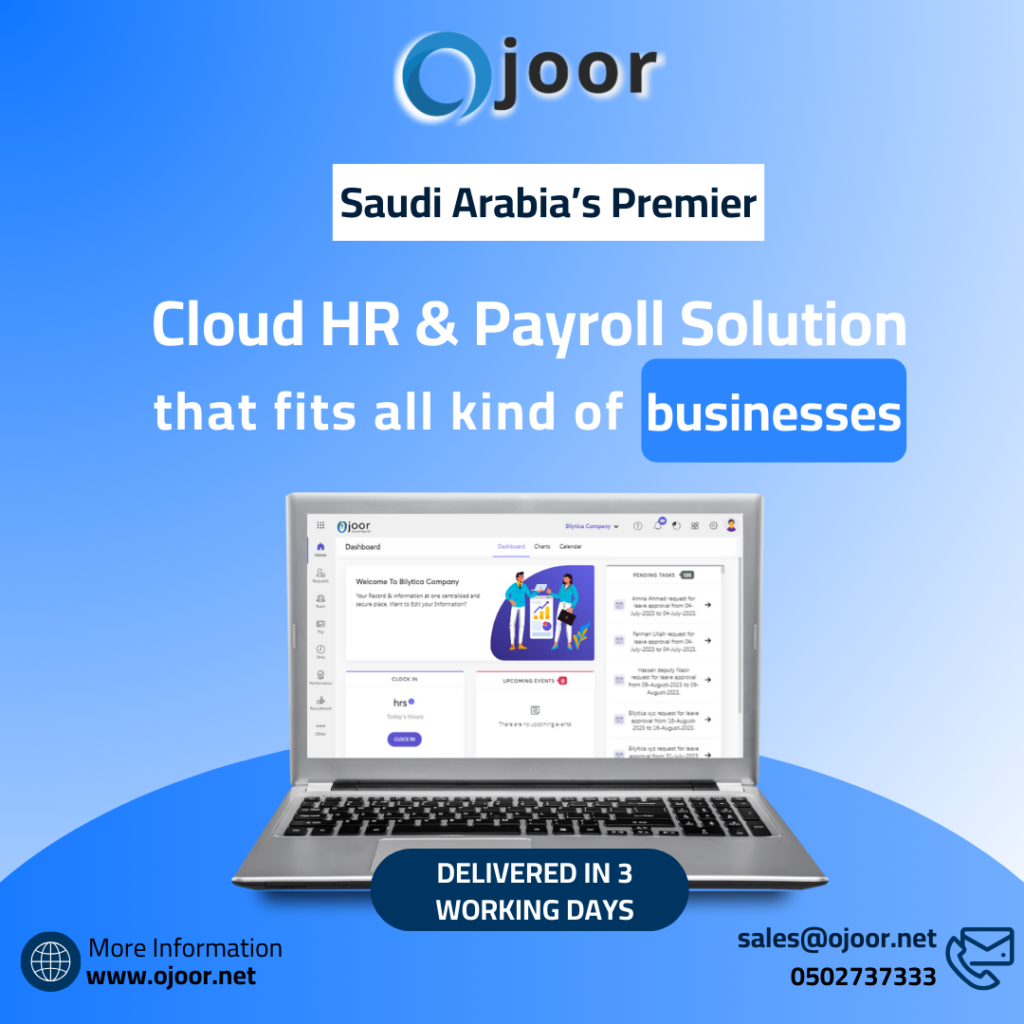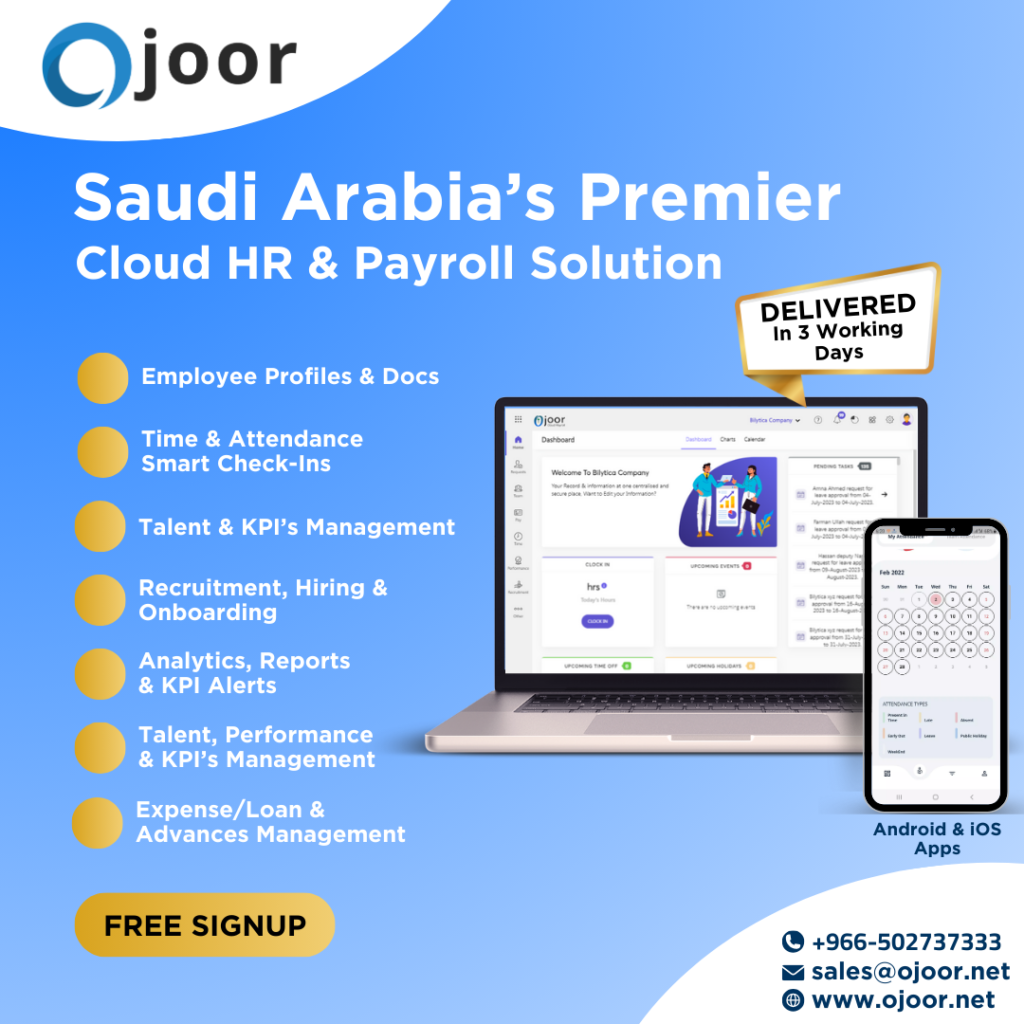Ojoor # 1 is one of the top Employee Management System in Saudi Arabia businesses must consider the unique cultural, regulatory, and operational requirements of the region. These systems are designed to streamline HR processes, enhance employee productivity, ensure compliance with local laws, and accommodate specific business practices prevalent in Saudi Arabia. Below, we explore the key features of an EMS that effectively caters to the needs of Saudi Arabian businesses.
Click to Start Whatsapp Chatbot with Sales
Mobile: +966547315697
Email: sales@Ojoor.net
Ojoor #1 Employee Management System in Saudi Arabia
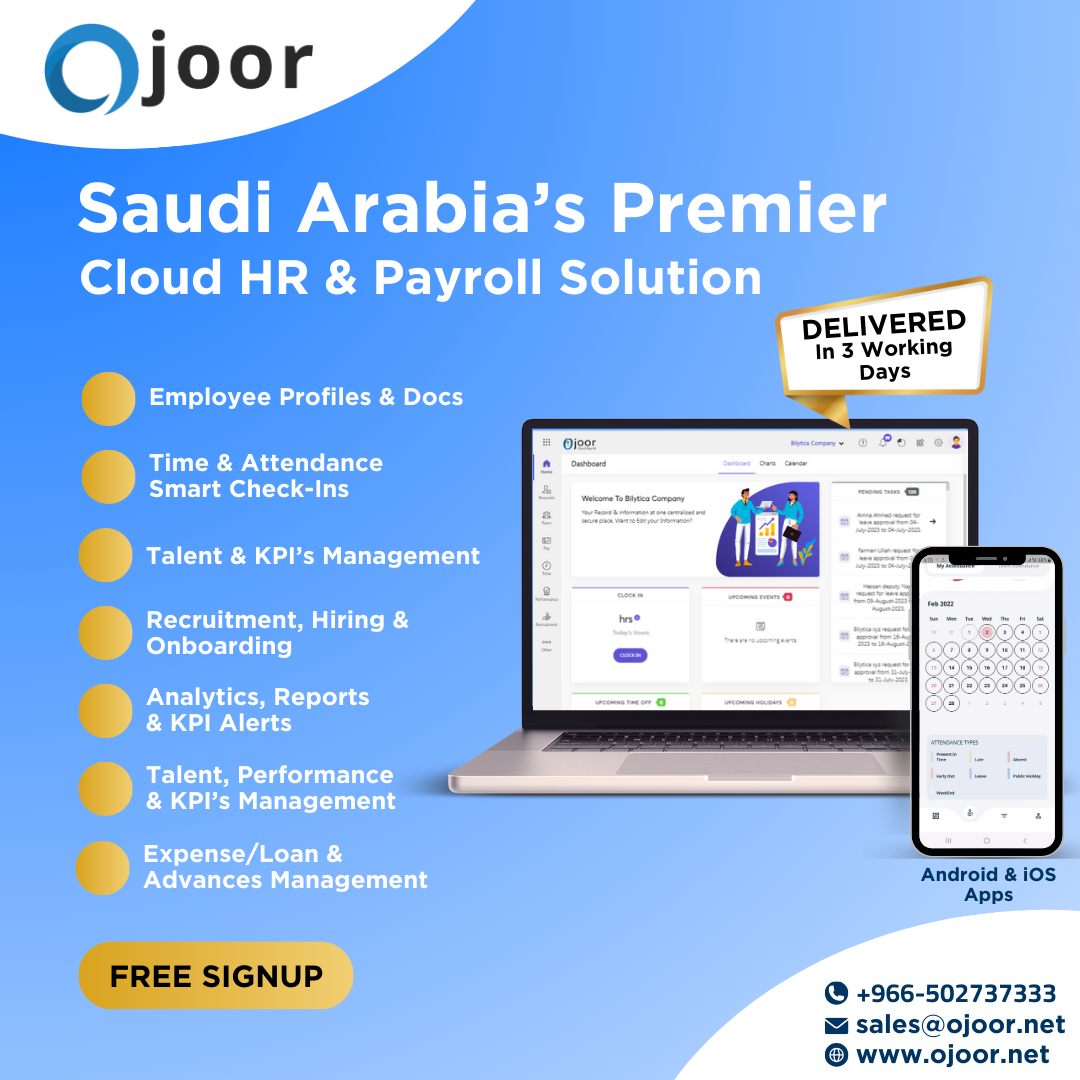
Compliance with Saudi Labor Laws
- Regulatory Compliance: An Employee Management System in Saudi Arabia must be equipped to handle the intricacies of Saudi labor laws, which include specific regulations on working hours, rest periods, overtime, and end-of-service benefits. The system should automatically update to reflect any changes in legislation, ensuring continuous compliance.
- Saudization Requirements: The Nitaqat program mandates a certain percentage of Saudi nationals in the workforce. An effective EMS tracks Saudization quotas helps in strategic hiring to meet these targets and generates compliance reports.
Localization and Language Support
- Arabic Language Support: Given that Arabic is the official language, an EMS should support Arabic alongside English. This includes interfaces, reports, and documentation in both languages, ensuring accessibility and ease of use for all employees.
- Cultural Sensitivity: Features like Hijri calendar integration, local holiday management, and consideration of cultural norms in workflow processes are essential. The system should respect the workweek structure, typically from Sunday to Thursday.
Payroll and Compensation Management
- Localized Payroll Processing: The EMS should handle salary calculations, deductions, and benefits according to Saudi regulations. This includes considerations for zakat, GOSI (General Organization for Social Insurance) contributions, and other mandatory deductions.
- End-of-Service Benefits: The Employee Management System in Saudi Arabia must accurately calculate end-of-service gratuities based on tenure and last-drawn salary, as stipulated by Saudi labor laws.
- Wages Protection System (WPS): Compliance with the WPS, which ensures timely salary payments through electronic means, is crucial. The EMS should integrate with banks and generate necessary reports for WPS compliance.
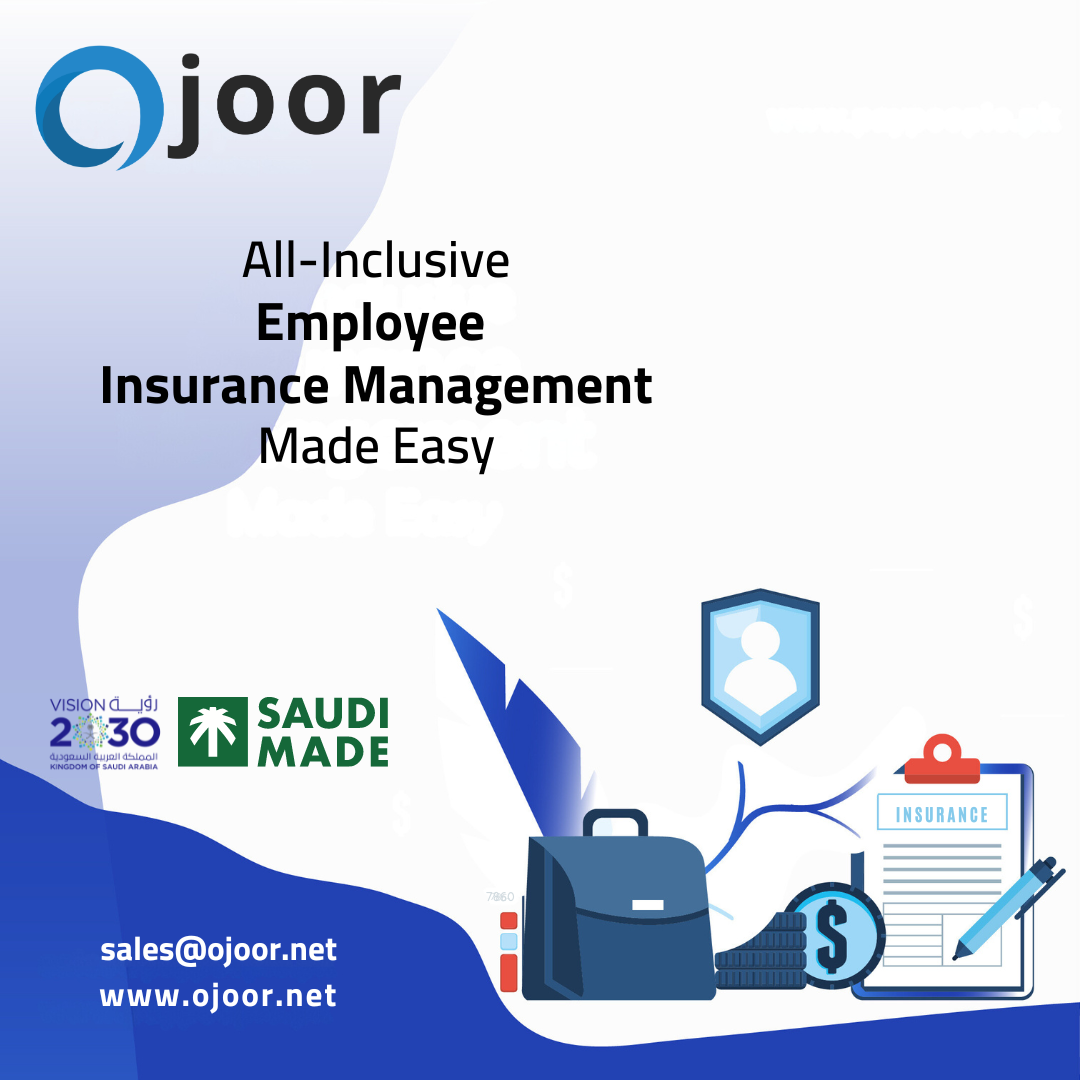
Attendance and Time Tracking
- Biometric Integration: The LMS training should support biometric devices for accurate time and attendance tracking, reducing the chances of buddy punching and time theft.
- Shift and Schedule Management: It should facilitate the creation and management of complex shift schedules, catering to industries like healthcare, retail, and manufacturing that require round-the-clock operations.
- Remote and Flexible Work Tracking: With the growing trend of remote work, especially post-COVID-19, the system should enable remote attendance tracking and flexible work hours management.
Recruitment and Onboarding
- Applicant Tracking System (ATS): The EMS should streamline the recruitment process by managing job postings, applications, candidate evaluations, and interview scheduling.
- Onboarding Automation: Once a candidate is hired, the EMS should automate the onboarding process, including document collection, orientation schedules, and initial training programs. This ensures a smooth transition for new hires.
Performance Management
- Goal Setting and Tracking: The system should allow managers and employees to set, track, and review performance goals. This can include OKRs (Objectives and Key Results) and KPIs (Key Performance Indicators) tailored to organizational objectives.
- 360-Degree Feedback: Incorporating a comprehensive feedback system, including peer reviews, self-assessments, and manager evaluations, helps in holistic employee development.
- Continuous Performance Monitoring: Regular check-ins and performance updates, rather than annual reviews, ensure continuous improvement and alignment with business goals.
Learning and Development
- Training Management: The EMS should facilitate the planning, execution, and tracking of training programs. This includes managing training schedules, enrolling employees in courses, and tracking progress.
- E-Learning Integration: With the increasing emphasis on digital learning, integration with e-learning platforms allows employees to access training materials and courses online, supporting continuous learning.
Employee Self-Service
- Self-Service Portals: Empowering employees with self-service portals where they can access personal information, request leaves, view payslips, and update details enhances transparency and reduces administrative burden.
- Mobile Accessibility: A mobile-friendly HR System in Saudi Arabia ensures that employees and managers can access essential features and information on the go, improving efficiency and convenience.
Leave and Absence Management
- Customizable Leave Policies: The system should support the configuration of various leave types, such as annual leave, sick leave, maternity/paternity leave, and unpaid leave, in accordance with Saudi regulations.
- Leave Balance Tracking: Real-time tracking of leave balances and automated leave accruals help in accurate leave management and planning.
- Approval Workflows: Automated workflows for leave requests and approvals streamline the process and ensure consistency and compliance.
Analytics and Reporting
- Customizable Reports: The EMS should offer a wide range of customizable reports on various HR metrics such as attendance, payroll, performance, and compliance. These reports aid in data-driven decision-making.
- Dashboards: Interactive dashboards providing real-time insights into key HR metrics help managers monitor workforce trends and address issues proactively.
Integration Capabilities
- ERP and Other Systems Integration: Seamless integration with existing enterprise resource planning (ERP) systems, accounting software, and other business applications ensures data consistency and operational efficiency.
- APIs and Custom Integrations: Open APIs enable custom integrations with third-party tools and services, allowing businesses to extend the functionality of their EMS as needed.
Security and Data Privacy
- Data Security: Ensuring the security of sensitive employee data through encryption, secure access controls, and regular security audits is critical.
- Compliance with Data Protection Laws: Adherence to local and international data protection regulations, such as the Saudi Data and Artificial Intelligence Authority (SDAIA) guidelines, ensures data privacy and compliance.
Conclusion
An employee management system tailored for Saudi Arabian businesses must encompass features that address local legal requirements, cultural nuances, and specific business practices. By incorporating robust compliance mechanisms, localized payroll processing, advanced attendance tracking, comprehensive performance management, and strong data security measures, an EMS can significantly enhance HR operations and contribute to the overall efficiency and productivity of organizations in Saudi Arabia. The successful implementation of such a system can transform HR management, ensuring that businesses remain competitive and compliant in a rapidly evolving market.
Click to Start Whatsapp Chatbot with Sales
Mobile: +966547315697
Email: sales@Ojoor.net
Employee Management Software in Saudi Arabia
Employee Management Software in Saudi Arabia
Employee Management Software in Saudi Arabia
Key features of an Employee Management System in Saudi Arabia similar software solutions prices were updated on 2025-12-20T01:04:53+00:00 in Saudi Arabia in Mecca, Medina, Riyadh, Khamis Mushait, Yanbu, Jeddah, Dammam, Unaizah, Uqair, Ha’il, Ta if, Al Bahah, Dhahran, King Abdullah Economic City, Najran, Diriyah, Qatif, Khafji, Jubail, Abqaiq, List of Cities and Towns in Saudi Arabia, Ras Tanura, Turubah, Jazan Economic City, Knowledge Economic City, Medina, Khobar, Abha, Tabuk, Saudi Arabia, similar software solutions prices were updated on 2025-12-20T01:04:53+00:00 We also provide in Saudi Arabia services solutions company in Hafar Al-Batin, Udhailiyah, Al-Awamiyah, Hofuf, Hautat Sudair, Buraidah, Tayma, Duba, ‘uyayna, Saihat, Al-Kharj, Al-ula, Jizan, Rumailah, Ar Rass, Arar, Shaybah, Al Majma’ah, Rabigh, Dhurma, Haradh, List of Saudi Cities by Gdp Per Capita, Badr, Sudair Industrial City, Baljurashi, Shaqraa, Al-Khutt, Habala, Ad Dawadimi, Dawadmi, Layla, similar software solutions prices were updated on 2025-12-20T01:04:53+00:00 Price is SAR 100 and this was updated on updated on 2025-12-20T01:04:53+00:00 similar Key features of an Employee Management System in Saudi Arabia software solutions prices were updated on 2025-12-20T01:04:53+00:00 in Saudi Arabia in Haql, Afif, Al-Abwa, Farasan, Al-Jaroudiya, Thadig, Al-Thuqbah, Al Wajh, Almardmah, Al-Zilfi, Muzahmiyya, Prince Abdul Aziz Bin Mousaed Economic City, Tharmada’a, Skaka, Um Al-Sahek, Sharurah, Tanomah, Bisha, Dahaban, Al Qunfudhah, Qurayyat, Saudi Arabia, Ha’ir, as Sulayyil, Al Lith, Turaif, Al-Gway’iyyah, Samtah, Wadi Ad-Dawasir, Az Zaimah, Safwa City, Jalajil, Harmah, Mastoorah, Hotat Bani Tamim, Jabal Umm Al Ru’us, Rafha, Qaisumah, Al-Ghat, Hajrah, Al-Hareeq. Excerpt: Jeddah (also spelled Jiddah, Jidda, or Jedda; Arabic: Jidda) is a Saudi Arabian city located on the coast of the Red Sea and is the major urban center of western Saudi Arabia similar software solutions prices were updated on 2025-12-20T01:04:53+00:00 Price is SAR 100 and this was updated on updated on 2025-12-20T01:04:53+00:00
6-25-2024
